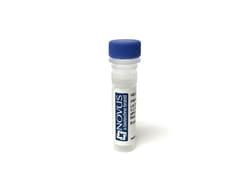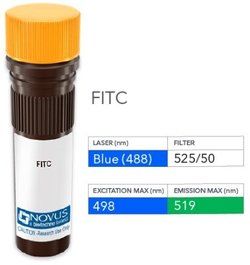SOX10 Antibody (SPM607) - IHC-Prediluted, Novus Biologicals™
Manufacturer: Novus Biologicals
Select a Size
| Pack Size | SKU | Availability | Price |
|---|---|---|---|
| Each of 1 | NBP248444-Each-of-1 | In Stock | ₹ 46,636.00 |
NBP248444 - Each of 1
In Stock
Quantity
1
Base Price: ₹ 46,636.00
GST (18%): ₹ 8,394.48
Total Price: ₹ 55,030.48
Antigen
SOX10
Classification
Monoclonal
Conjugate
Unconjugated
Formulation
10mM PBS and 0.05% BSA with 0.05% Sodium Azide
Gene Symbols
SOX10
Immunogen
Recombinant fragment (aa 115-269) of human SOX10 protein with hexa-histidine tag (Uniprot: P56693)
Quantity
7 mL
Primary or Secondary
Primary
Test Specificity
Recognizes a protein of ∼55kDa, identified as SOX10. This monoclonal antibody is highly specific and does not cross-react with other members of the SOX-family. SOX genes comprise a family of genes that are related to the mammalian sex-determining gene SRY. These genes similarly contain sequences that encode for the HMG-box domain, which is responsible for the sequence-specific DNA-binding activity. SOX-10 is a sensitive marker of melanoma, including conventional, spindled, and desmoplastic subtypes. It is expressed by metastatic melanomas and nodal capsular nevus in sentinel lymph nodes, but not by other lymph node components such as dendritic cells, which usually express S100 protein. Commonly used melanoma markers, such as anti-HMB-45 and anti-Melan-A, are poorly expressed in desmoplastic melanomas while SOX-10 is moderately to strongly expressed in desmoplastic melanomas. SOX-10 is considered as a very reliable marker for recognizing residual desmoplastic melanomas. In normal tissues, it is expressed in Schwann cells, melanocytes, and myoepithelial cells of salivary, bronchial and mammary glands. SOX-10 expression is also observed in mast cells.
Content And Storage
Store at 4C.
Isotype
IgG2b κ
Applications
Immunohistochemistry, Immunohistochemistry (Paraffin)
Clone
SPM607
Dilution
Immunohistochemistry, Immunohistochemistry-Paraffin
Gene Alias
MGC15649, PCWH, SRY (sex determining region Y)-box 10, SRY-related HMG-box gene 10, transcription factor SOX-10, WS4C, WS4mouse, human homolog of
Host Species
Mouse
Purification Method
Protein A or G purified
Regulatory Status
RUO
Gene ID (Entrez)
6663
Target Species
Human
Form
Purified
Description
- SOX10 Monoclonal specifically detects SOX10 in Human samples
- It is validated for Immunohistochemistry, Immunohistochemistry-Paraffin.


